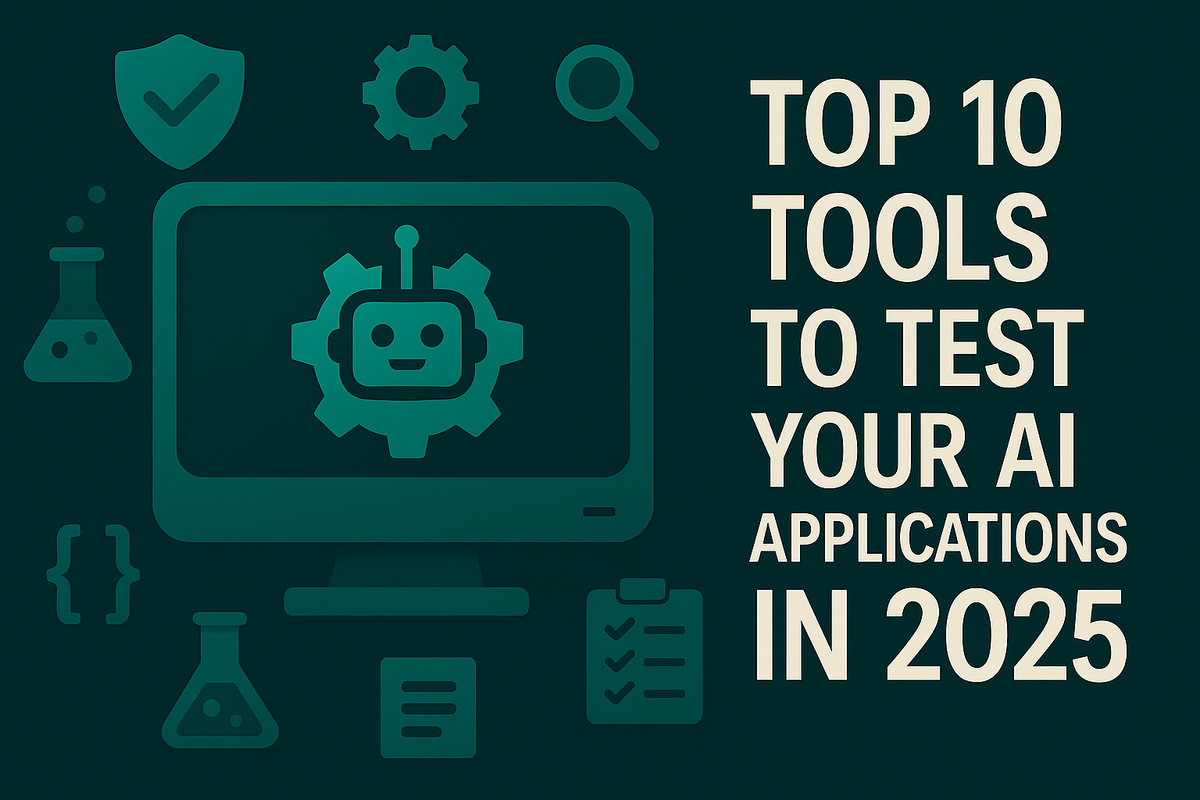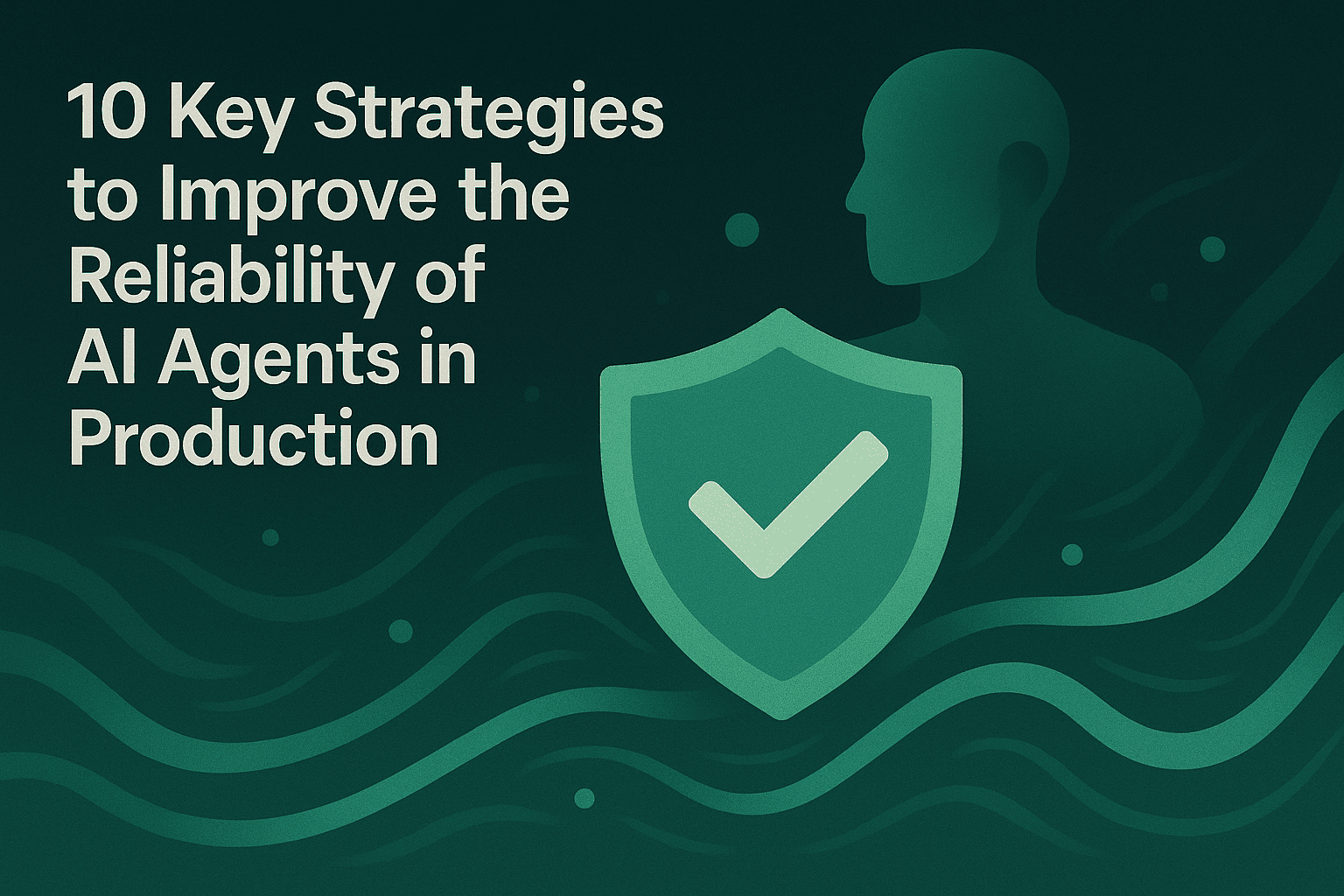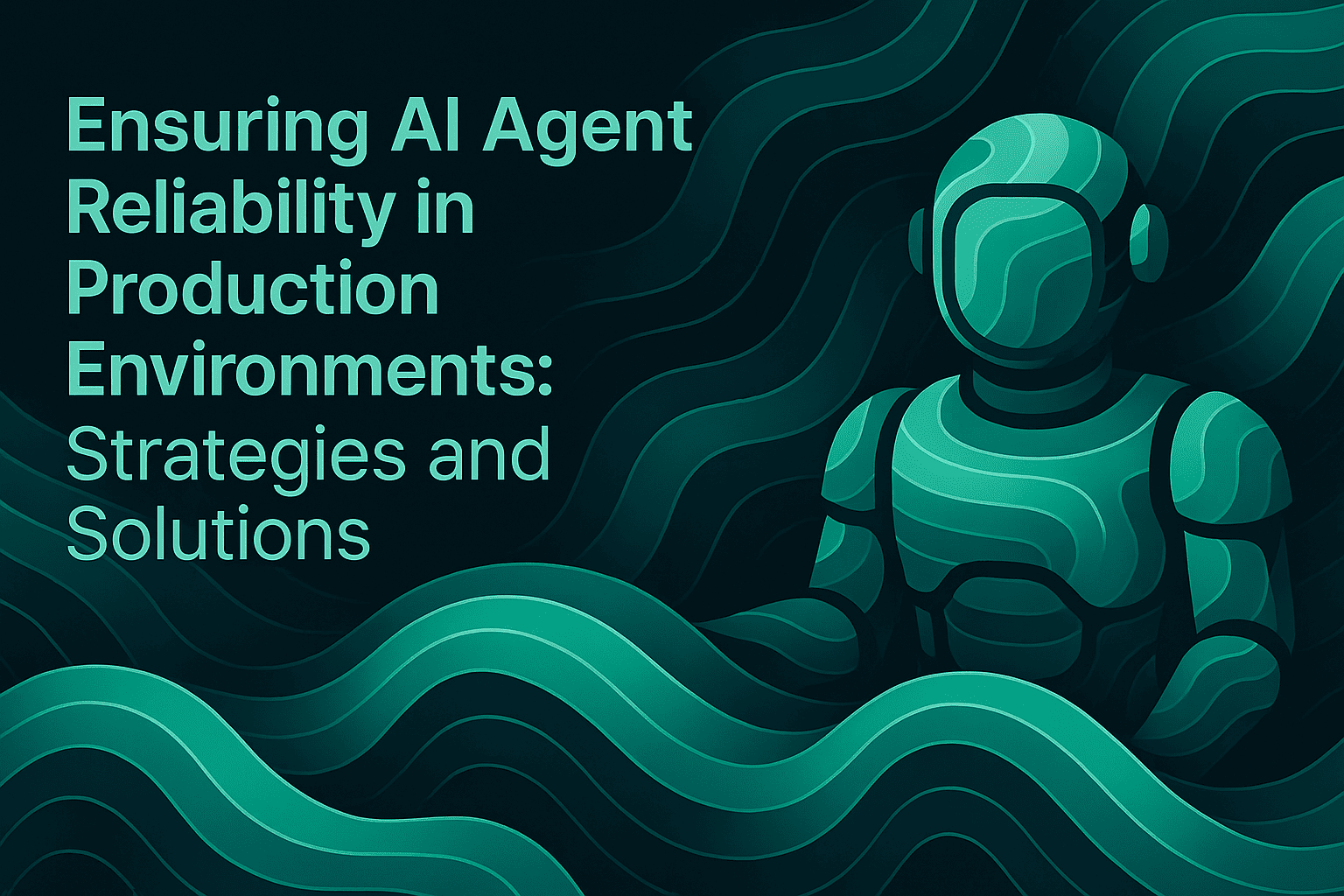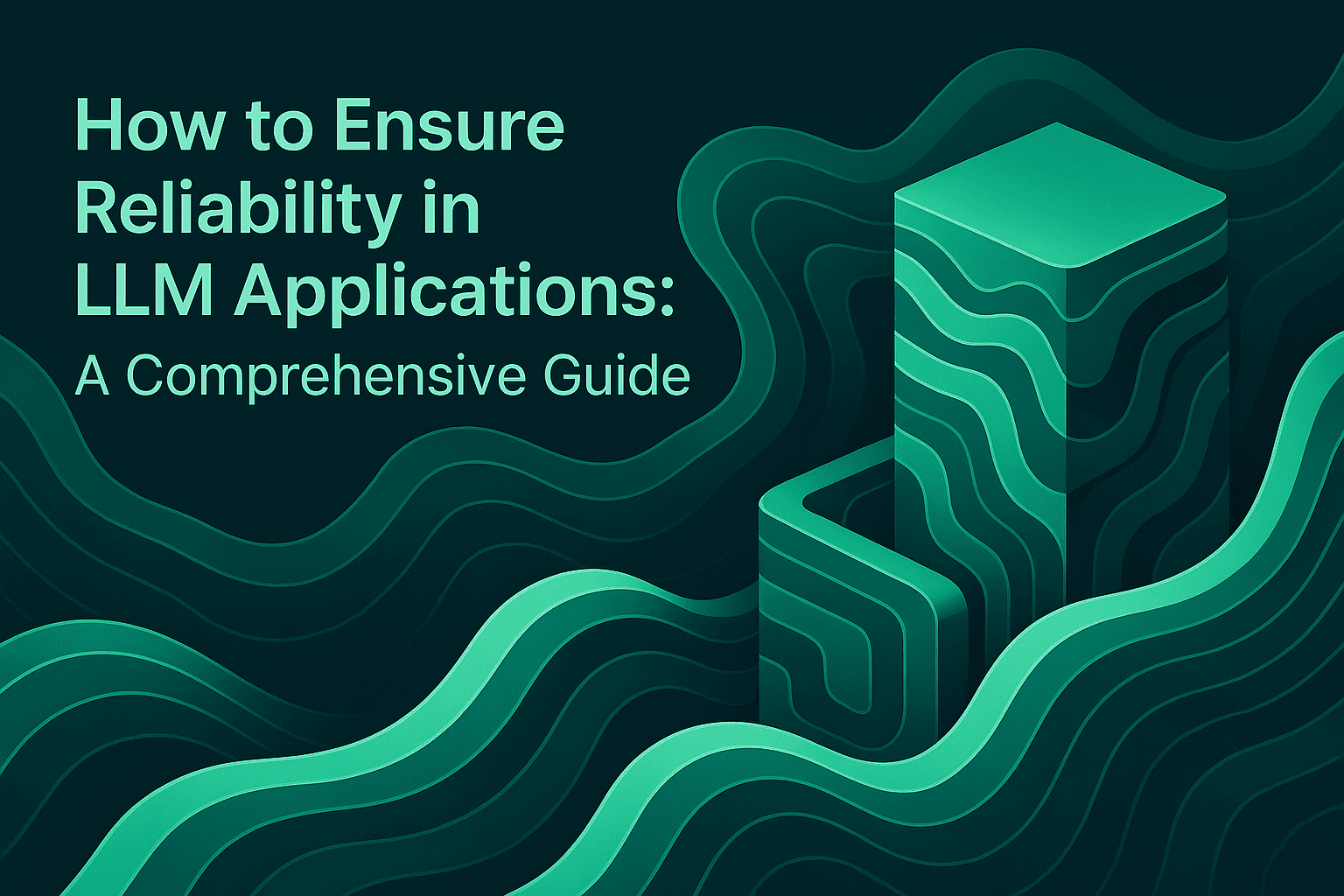Top 10 Tools to Test Your AI Applications in 2025

Artificial intelligence applications are rapidly transforming industries, from finance and healthcare to customer support and enterprise operations. As AI models and agents grow more sophisticated, ensuring their reliability, performance, and safety is paramount. In 2025, the landscape of AI testing tools is more advanced and diverse than ever, enabling teams to rigorously evaluate, monitor, and optimize their AI systems. This blog explores the top 10 tools for testing AI applications, highlighting their strengths, unique features, and how they fit into modern AI development workflows.
Why Testing AI Applications Matters
Testing AI applications is not merely a technical requirement—it's a critical step in delivering trustworthy and effective solutions. Issues like hallucinations, bias, drift, and unpredictable behavior can erode user trust and cause real-world harm. Robust testing frameworks allow organizations to:
- Validate model outputs against real-world scenarios
- Measure agent performance in production
- Detect and mitigate errors and vulnerabilities
- Ensure compliance with regulatory standards
- Optimize models for scalability and reliability
For a deeper dive into the importance of AI reliability and evaluation, see AI Reliability: How to Build Trustworthy AI Systems and AI Agent Quality Evaluation.
Criteria for Selecting AI Testing Tools
When selecting tools to test AI applications, consider these key criteria:
- Coverage: Does the tool support a wide range of models, agents, and data types?
- Evaluation Metrics: What metrics does it provide for quality, reliability, and safety?
- Integration: How easily does it integrate with existing workflows and platforms?
- Observability: Can it trace, monitor, and debug complex agent interactions?
- Scalability: Is it suitable for enterprise-scale workloads?
- Reporting: Does it deliver actionable insights and clear reporting?
Let's explore the top 10 tools that excel across these dimensions.
1. Maxim AI
Maxim AI stands out as a comprehensive platform for evaluating, monitoring, and optimizing AI agents and applications. Designed for both technical and non-technical teams, Maxim offers robust features for model and agent evaluation, workflow tracing, and reliability monitoring.
Key Features
- Agent & Model Evaluation: Supports granular evaluation workflows for both agents and underlying models. See Evaluation Workflows for AI Agents.
- Rich Metrics: Tracks output quality, reliability, and safety with customizable metrics. Refer to AI Agent Evaluation Metrics.
- Observability: Provides deep tracing for multi-agent systems, making debugging seamless (Agent Tracing for Debugging Multi-Agent AI Systems).
- Prompt Management: Organize, test, and optimize prompts at scale (Prompt Management in 2025).
- Case Studies: Trusted by enterprises like Clinc, Thoughtful, and Atomicwork (Clinc Case Study).
- Scalable Integrations: Seamlessly integrates with popular frameworks and cloud environments.
Try Maxim AI: Schedule a demo to see Maxim in action.
2. LangSmith
LangSmith provides tools for testing and monitoring language models, focusing on LLM application observability. It offers workflow tracing, data logging, and evaluation capabilities, making it a strong choice for teams building complex conversational AI systems.
Key Features
- Workflow tracing for LLM pipelines
- Custom metric tracking
- Integration with LangChain and other frameworks
- Real-time monitoring and debugging capabilities
Comparison: See how Maxim AI offers broader agent evaluation and reliability monitoring in Maxim vs LangSmith.
3. Braintrust
Braintrust is an AI evaluation and observability platform that provides tools for testing and monitoring LLM applications. The platform offers evals, production monitoring, and performance insights for AI teams.
Key Features
- Model evaluation and testing capabilities
- Production monitoring dashboards
- Performance analytics and insights
- Integration with popular AI frameworks
Comparison: For enterprise-grade reliability, comprehensive observability, and full-stack evaluation capabilities, Maxim AI provides more robust solutions (Maxim vs Braintrust).
4. Comet
Comet is well-known for experiment tracking, model monitoring, and reproducibility in machine learning workflows. It enables teams to log, compare, and share results across projects.
Key Features
- Comprehensive experiment tracking
- Model versioning and registry
- Collaboration tools for ML teams
- Integration with popular ML frameworks
Comparison: Maxim AI's agent-centric evaluation and workflow tracing offer additional layers of quality assurance beyond traditional experiment tracking (Maxim vs Comet).
5. Langfuse
Langfuse is an open-source LLM engineering platform that specializes in tracing and monitoring LLM-based applications. Its core strength lies in visualizing agent interactions and providing actionable insights.
Key Features
- Rich tracing for LLM agents with OpenTelemetry support
- Performance dashboards and analytics
- Prompt management and versioning
- Integration with popular AI frameworks including LangChain
- Self-hosting options for data privacy
Comparison: Maxim AI's broader coverage of agent and model evaluation, plus enterprise support and full lifecycle management, delivers added value (Maxim vs Langfuse).
6. Arize AI
Arize AI focuses on model observability and monitoring in production environments. Its platform is built for large-scale deployments and provides real-time alerts for drift and anomalies. The company also offers Phoenix, an open-source AI observability platform.
Key Features
- Real-time model monitoring and alerting
- Drift detection across model dimensions
- LLM observability with Phoenix (open source)
- Automated alerting and anomaly detection
- Integration with popular ML platforms
Comparison: Maxim AI combines these capabilities with comprehensive agent evaluation, prompt management, and simulation testing (Maxim vs Arize).
7. MLflow
MLflow is a widely used open-source platform for managing the ML lifecycle, including experimentation, reproducibility, and deployment. It is highly extensible and integrates well with cloud and on-premises environments.
Key Features
- Comprehensive experiment tracking
- Model registry and versioning
- Deployment tools for multiple platforms
- Integration with popular ML frameworks
- Community-driven development
Use Case: Often paired with evaluation platforms like Maxim AI for end-to-end AI application management.
8. Deepchecks
Deepchecks offers an open-source toolkit for automated testing of machine learning models, with a focus on data integrity, performance, and fairness. Its validation capabilities are valued for pre-deployment testing.
Key Features
- Automated data validation and quality checks
- Model performance testing
- Fairness and bias detection
- Pre-built test suites for common issues
- Integration with ML workflows
Integration: Can be used in tandem with Maxim AI for comprehensive agent and model evaluation throughout the development lifecycle.
9. Evidently AI
Evidently AI is an open-source platform that provides tools for monitoring data and model quality in production. Its dashboards help teams detect drift, bias, and degradation over time.
Key Features
- Real-time data and model monitoring
- Drift and bias detection
- Interactive dashboards for visualization
- Test suites for quality assurance
- Support for both tabular and LLM data
Best Practice: Use in tandem with Maxim AI's reliability workflows to ensure robust production systems with comprehensive agent-level monitoring.
10. Robust Intelligence
Robust Intelligence delivers automated testing and validation for AI models against adversarial inputs and edge cases, helping organizations safeguard their applications against security threats.
Key Features
- Adversarial testing and red teaming
- Automated validation against security threats
- Compliance reporting for regulatory standards
- AI firewall for production protection
- Supply chain risk assessment
Enterprise Use: Complements Maxim AI's evaluation and monitoring capabilities for high-stakes AI deployments requiring comprehensive security validation.
Building a Modern AI Testing Workflow
The best AI teams in 2025 leverage a combination of these tools to build resilient, high-quality applications. A typical workflow might include:
- Prompt Management and Testing: Using Maxim AI to organize, test, and optimize prompts (Prompt Management in 2025).
- Agent and Model Evaluation: Running evaluation workflows to measure quality, reliability, and safety (AI Agent Quality Evaluation).
- Observability and Tracing: Monitoring agent interactions and debugging complex workflows (Agent Tracing for Debugging Multi-Agent AI Systems).
- Production Monitoring: Using model monitoring tools to detect drift, bias, and performance issues (LLM Observability).
- Continuous Improvement: Leveraging actionable insights and metrics to optimize models and agents (How to Ensure Reliability of AI Applications).
For a detailed look at the difference between agent and model evaluation, see Agent Evaluation vs Model Evaluation: What's the Difference and Why It Matters.
Maxim AI: The End-to-End Hub for AI Application Testing
While each tool brings unique strengths, Maxim AI stands out for its unified approach to agent and model evaluation, workflow tracing, and reliability monitoring. Its seamless integrations, enterprise-grade scalability, and rich evaluation metrics make it a preferred choice for organizations building mission-critical AI systems.
For real-world examples, explore Maxim's case studies:
- Clinc: Elevating Conversational Banking
- Thoughtful: Smarter AI for Enterprise
- Atomicwork: Scaling Enterprise Support
- Mindtickle: AI Quality Evaluation
Conclusion
In 2025, the demand for reliable, high-performing AI applications is higher than ever. Testing and evaluation are no longer optional—they are essential for delivering value, ensuring safety, and building trust. The tools highlighted above represent the cutting edge of AI testing, each contributing vital capabilities to the modern AI development pipeline.
Maxim AI leads the way with its holistic platform, empowering teams to evaluate, monitor, and optimize AI agents and models at scale. By integrating Maxim AI with other best-in-class tools, organizations can build robust, resilient, and responsible AI systems ready for the future.
Ready to elevate your AI application testing? Schedule a demo with Maxim AI and discover how you can build and deploy reliable AI solutions with confidence.


